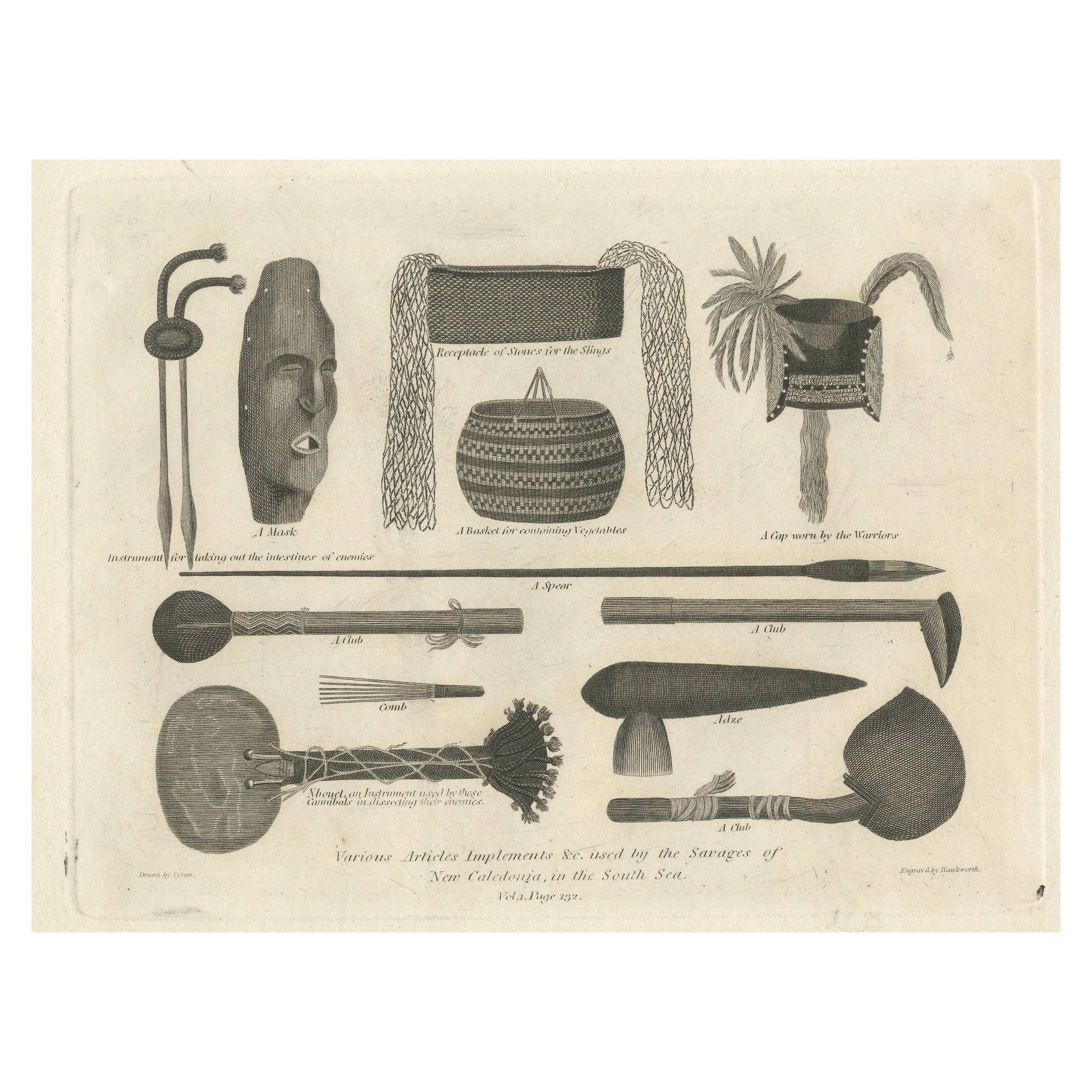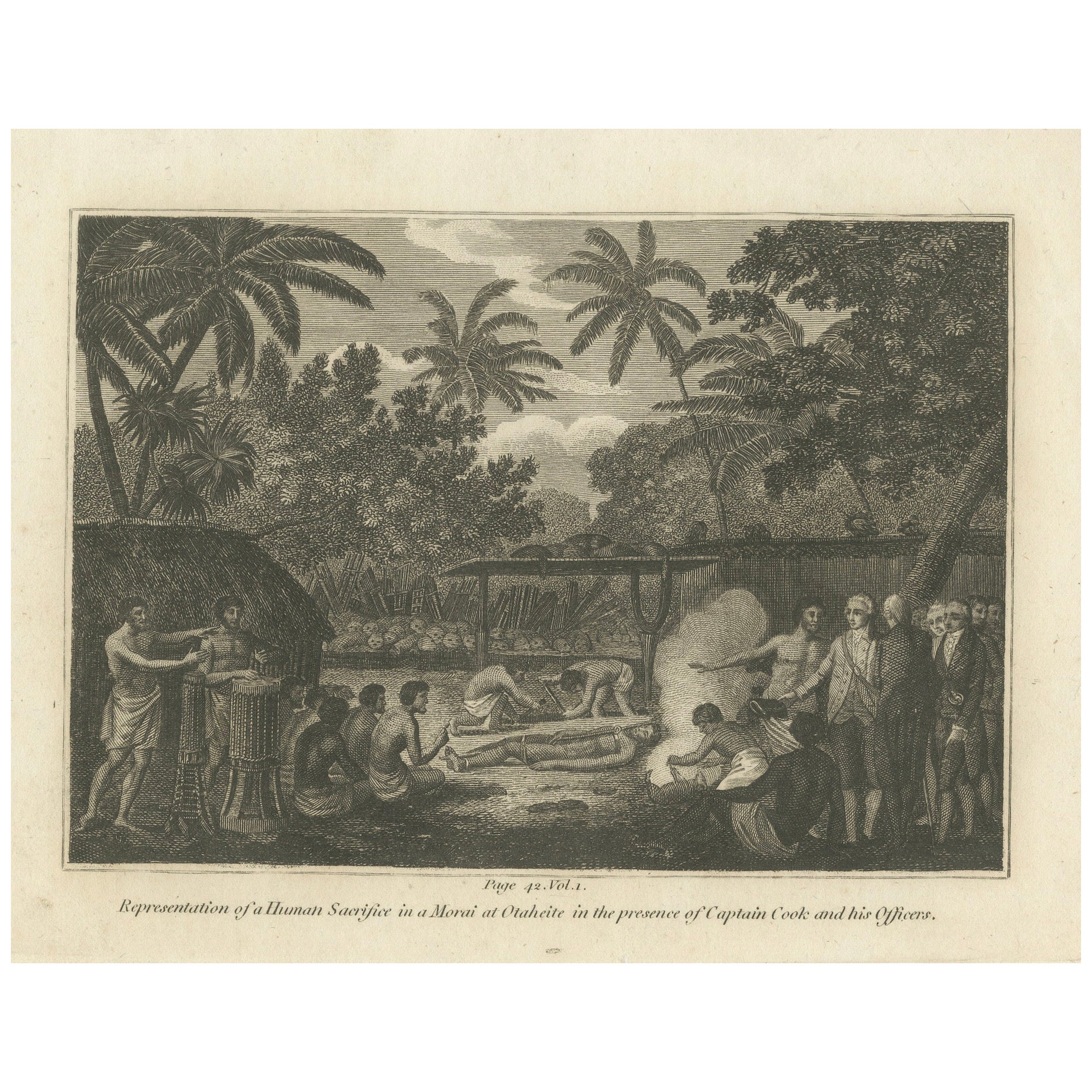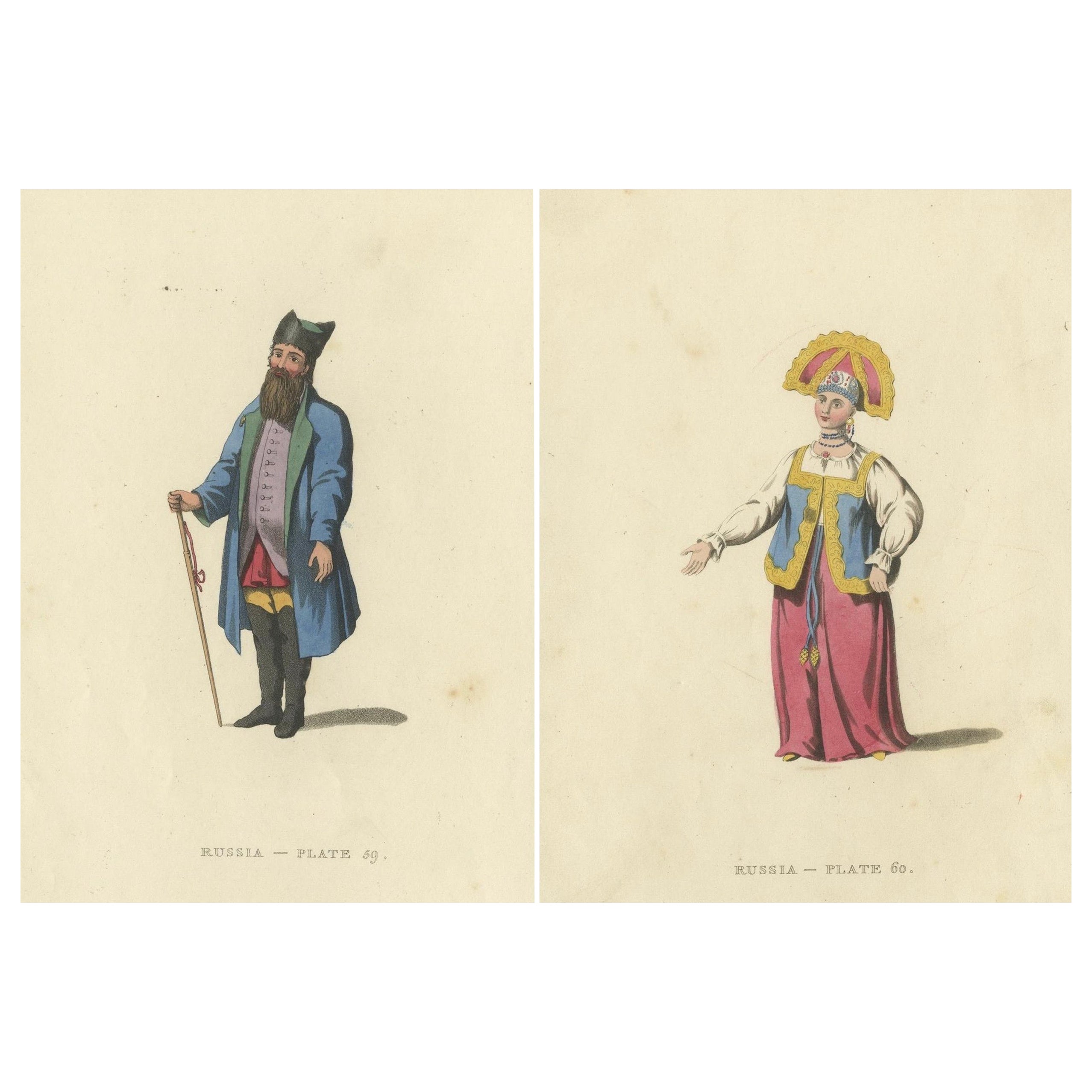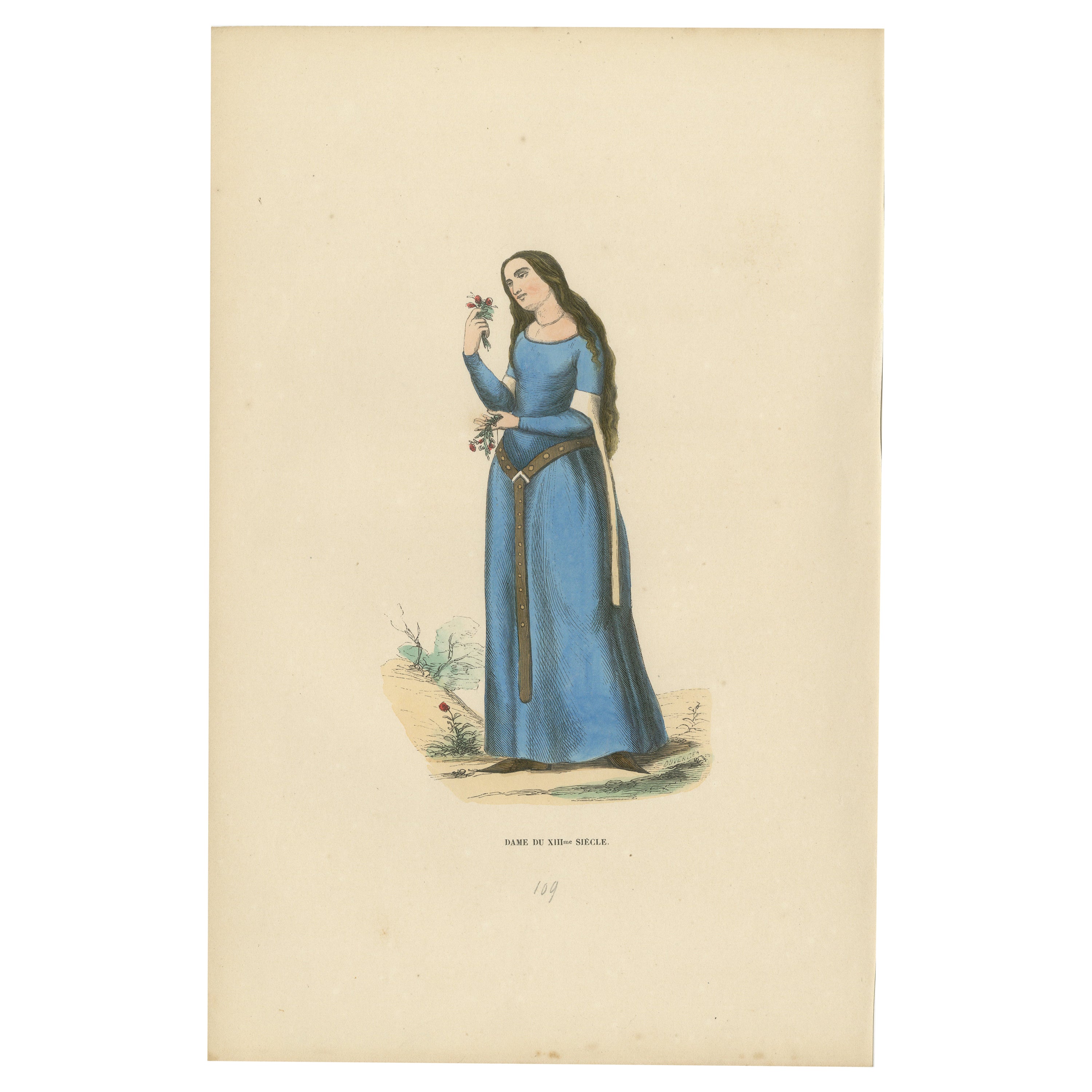Items Similar to Mamluk Elegance: Military and Ceremonial Attire in Egypt, 1801
Want more images or videos?
Request additional images or videos from the seller
1 of 7
Mamluk Elegance: Military and Ceremonial Attire in Egypt, 1801
About the Item
The engraving shows two Mamluks: one in full military attire, and the other, of a higher order, in full ceremonial dress. The detailed illustration captures the distinctiveness of their apparel, reflecting their status and role within Egyptian society during the period when Mamluks held significant military and political power. The background, featuring architectural elements and palm trees, places them firmly in the Egyptian landscape, hinting at the country's rich cultural and historical context.
The Mamluks were a warrior class who originated as slave soldiers. They held power in Egypt from the 13th to the early 16th centuries, establishing a sultanate that lasted until the Ottoman conquest. Renowned for their military prowess, the Mamluks successfully defended Egypt against the Mongols and the Crusaders. Their governance was characterized by a complex social and political structure, with a hierarchy based on military achievements and patronage. Despite their slave origins, Mamluks could rise to high positions of power and influence, with many going on to become sultans and governors.
Description: This is a circa 1801 copperplate engraving from George Alexander Cooke's "Universal Geography" .
The print is part of George Alexander Cooke's comprehensive work "A Modern and Authentic System of Universal Geography." This book was a significant compilation of geographical knowledge during the late 18th century, offering descriptions and accounts of various parts of the world, influenced by the age of exploration. It includes narratives of famed explorers like Captain James Cook and Ferdinand Magellan, detailing their discoveries and journeys that expanded the European understanding of the globe. Cooke's work served as both a chronicle and reference for the territories and cultures encountered by these voyagers.
- Dimensions:Height: 7.88 in (20 cm)Width: 10.44 in (26.5 cm)Depth: 0 in (0.02 mm)
- Materials and Techniques:Paper,Engraved
- Period:
- Date of Manufacture:circa 1801
- Condition:Good. Some soiling around the edges due to handling. This is not a reproduction but an original engraving of over 200 years old. Aged paper with typically warm, yellowish-brown hue. Study the image carefully.
- Seller Location:Langweer, NL
- Reference Number:
About the Seller
5.0
Platinum Seller
These expertly vetted sellers are 1stDibs' most experienced sellers and are rated highest by our customers.
Established in 2009
1stDibs seller since 2017
1,919 sales on 1stDibs
Typical response time: <1 hour
- ShippingRetrieving quote...Ships From: Langweer, Netherlands
- Return PolicyA return for this item may be initiated within 14 days of delivery.
More From This SellerView All
- Society of the Nile: Mamluk, Lady, and Almee in Egypt, 1801Located in Langweer, NLThis engraving portrays three distinct figures: an Egyptian Mamluk, an Egyptian lady, and an Almee or dancing girl, representative of Egypt's social diversity. The Mamluk stands prom...Category
Antique Early 1800s Prints
MaterialsPaper
- 1801 Engraving of New Caledonian Implements and AttireLocated in Langweer, NLVarious Articles Implements And Used By The Savages Of New Caledonia In The South Sea Description: This 1801 copperplate engraving from George Alexander Cooke's "Universal Geography" displays various tools and clothing of the indigenous people of New Caledonia in the South Sea. Items depicted include a mask, a basket for containing feathers, a warrior's cap, instruments for tattooing, a club, a spear, and other artifacts integral to the daily and ceremonial life of the New Caledonian people. The engraving provides a visual documentation of the cultural artifacts encountered by explorers like Captain James Cook during their voyages. The print includes various items used by the indigenous people of New Caledonia: 1. A mask, likely used in rituals or ceremonies. 2. A basket for containing feathers, possibly for storage or transport of valuable items. 3. A cap worn by warriors, part of their traditional attire. 4. Tattooing instruments for marking the skin with cultural or status symbols. 5. A club, which could be a weapon or a symbol of power. 6. A spear, used for hunting or as a weapon. 7. An adze, a tool for woodworking...Category
Antique Early 1800s Prints
MaterialsPaper
- Ceremonial Rites: A Human Sacrifice in Otaheite (Tahiti), 1801Located in Langweer, NLThe title for the provided engraving could be "Ceremonial Rites: A Human Sacrifice in Otaheite," capturing the gravity of the depicted event. This print likely illustrates a solemn a...Category
Antique Early 1800s Prints
MaterialsPaper
- Sartorial Elegance of Kaluga: A Merchant and a Woman in Traditional Attire, 1814Located in Langweer, NLThe two engravings illustrate the regional dress of inhabitants from Kaluga, Russia, highlighting the unique characteristics of their traditional attire: 1. **A Woman from Kalouga i...Category
Antique 1810s Prints
MaterialsPaper
- Ceremonial Grace: The Gift-Bearing Attire of a Tahitian Woman in 1799Located in Langweer, NLEngraved plate by John Webber, titled "A Young Woman of Otaheite, in the dress they assume when bringing a Present." This work was included in the published account of Captain Jame...Category
Antique Late 18th Century Prints
MaterialsPaper
- 13th Century Elegance: A Noblewoman Amidst Nature in Medieval Attire, 1847Located in Langweer, NL"Dame du XIIIe Siècle" (Lady of the 13th Century) Description: This delicate hand-colored engraving from the 1847 "Costume du Moyen Age" series depicts a lady from the 13th century....Category
Antique 1840s Prints
MaterialsPaper
You May Also Like
- Original Antique Print of A Stag, Circa 1801Located in St Annes, LancashireGreat image of a stag Copper-plate engraving Published by Bunny and Gold . Dated 1801 Unframed.Category
Antique Early 1800s English Georgian Prints
MaterialsPaper
- Set of 5 Original Antique Fishing / Angling Prints, Dated 1801Located in St Annes, LancashireGreat set of 5 fishing prints Copper-plate engravings Published by Bunney & Gold, London Unframed The measurement give below is for one print. Free shipping.Category
Antique Early 1800s English Folk Art Prints
MaterialsPaper
- Set of 12 Original Antique Sporting Prints. Dated 1801Located in St Annes, LancashireGreat set of 12 sporting prints Copper-plate engravings after the original drawings mainly by Gilpin Published by Bunney & Gold, London Unfra...Category
Antique Early 1800s English Folk Art Prints
MaterialsPaper
- Snaffles WW1 Military Lithograph, 'le 75' Military Print.By Charles "Snaffles" Johnson PayneLocated in Oxfordshire, GBVintage Snaffles WWI Military Print, Le 75. A good Snaffles WWI military print 'Le 75', the main center colour-piece hand coloured lithograph is mounted onto the printed remarque boa...Category
Early 20th Century English Sporting Art Prints
MaterialsPaper
- 19th Century Japanese Woodblock Print Depicting a Ceremonial Tassel and FanLocated in Yonkers, NYAn antique Japanese woodblock print from the 19th century depicting a ceremonial tassel. Created in Japan during the 19th century, this woodblock print attracts our attention with it...Category
Antique 19th Century Japanese Prints
MaterialsGlass, Wood, Paint, Paper
- "The Battle of Bunker's Hill, Near Boston" Engraving by James Mitan, 1801By John TrumbullLocated in Colorado Springs, COThis dramatic Revolutionary War engraving of the Battle of Bunker Hill is after the famous 1785 oil-on-canvas by John Trumbull. Capturing the intensity of the battle, the engraving centers on Major John Small restraining a “lobster-back” from bayoneting Major General Joseph Warren. Warren lies mortally wounded in the midst of chaos around him. In the background, British forces are seen cresting the last defenses of the brave, yet green army of Colonial soldiers. The Battle of Bunker Hill was fought on June 17, 1775, in the early stages of the American Revolutionary War. The battle is named after Bunker Hill in Charlestown, Massachusetts. Although it was the original objective of both the Colonial and British troops, the area was only peripherally involved in the battle. Rather, the majority of the combat took place on the adjacent Breed’s Hill. The battle pitted a more organized British force against a young and inexperienced American militia. Although considered a tactical victory for the British, it came at the cost of considerable casualties, including a large number of officers. The battle demonstrated that the inexperienced American militia was able to stand up to the British army troops in battle. The battle results discouraged the British from any further frontal attacks against well-defended front lines. American casualties were comparatively fewer, although their losses included Gen. Joseph Warren. During the battle, the patriot-turned-painter John Trumbull (1756-1843) was stationed in Roxbury on the far side of Boston, where he could hear the sounds of fighting. In late 1785, Trumbull decided to devote himself to the depiction of Revolutionary War scenes, a series of eight epic pictures. From the beginning, Trumbull intended for the paintings to be later engraved for sale. Trumbull began the oil-on-canvas of The Death of General Warren at the Battle of Bunker’s Hill and The Death of General Montgomery in the Attack of Quebec, in the studio of Benjamin West in London. Bunker’s Hill was completed in March 1786; Trumbull started Attack of Quebec in February 1785 and finished it before he brought it to Paris in 1786. He then started The Declaration of Independence at Thomas Jefferson's house in Paris. As soon as Bunker’s Hill was completed, Trumbull searched for a suitable engraver in London. He was unsuccessful, as many British engravers were nervous about engraving an American battle...Category
Antique Early 1800s English Federal Prints
MaterialsPaper





